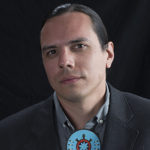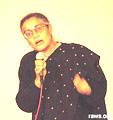Be the first to review “Wounded Knee to Standing Rock: Indigenous Resistance” Cancel reply
Wounded Knee to Standing Rock: Indigenous Resistance
In South Dakota, in 1973, hundreds of Native American activists led by members of the American Indian Movement occupied the Pine Ridge Reservation village of Wounded Knee— which was also the site of a notorious massacre in 1890 in which federal troops killed 300 Lakota men, women and children. The months-long action in 1973 helped galvanize the movement for Indigenous rights which continues today. As the great historian Roxanne Dunbar-Ortiz says, U.S. “policies involving Indigenous peoples have consistently been designed to disadvantage the Indigenous, locking them into suppressed social status and codifying dependence on the U.S. government.” Despite a history of oppression and genocide and continued discrimination Native Americans are organizing and resisting. A younger generation of Indigenous activists offers the promise of not just survival but for a resurgence of Indigenous societies and a renaissance of traditional culture.
Interview by David Barsamian.
Recorded at the University of Denver.
Speaker

Nick Estes
Nick Estes is a citizen of the Lower Brule Sioux Tribe. He is a professor in the Department of American Indian Studies at the University of Minnesota. He is co-founder of The Red Nation, an Indigenous resistance organization. His articles appear in The Intercept, Jacobin, Indian Country Today, and High Country News. He is the author of Our History Is the Future: Standing Rock versus the Dakota Access Pipeline, and The Long Tradition of Indigenous Resistance, and he co-edited Standing with Standing Rock: Voices from the #NoDAPL Movement.







Reviews
There are no reviews yet.